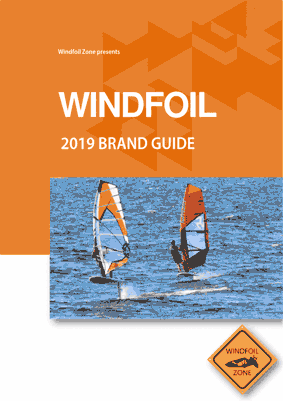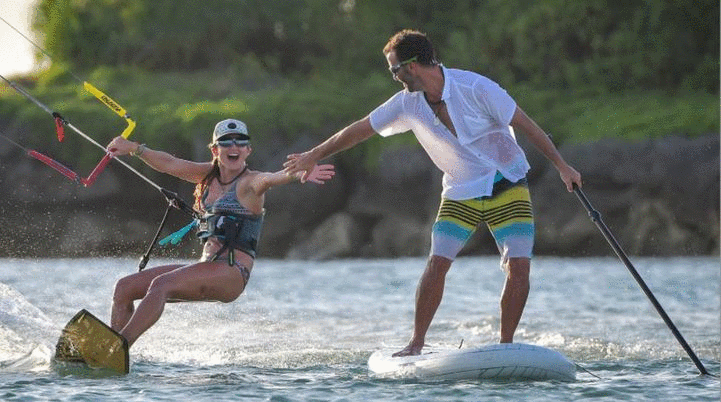Stall speed and its impact on completing the (elusive) windfoil gybe
- Tez Plavenieks
- Apr 15, 2020
- 4 min read
Words: Tez Plavenieks
Pics: James Jagger
Most riders, when they initially get into windfoiling, want to fly in light winds and cruise along using as small a sail as possible.
The industry, by and large, have reacted to this trend with more brands recently introducing equipment that allows this: bigger foil wings, that boast earlier lifting properties, which are super easy to learn with and progress on.
Another ‘thing’ recreational foilers lean towards is being on gear that’s nimble and manoeuvrable. Having gone through the learning phase, and progressed to competently controlling and sustaining ride height, the logical next step is turning round (or foiling gybes / jibes if you like).

Of course, there are a few who also take this further and dabble with foiling duck gybes, downwind and upwind 360s as well as other foiling moves. Then there’s the likes of Wyatt Miller, Balz Müller and his bro Jakob, with a sprinkling of others, who’ve taken this to the extreme with the newly invented foilstyle discipline.
Whilst it’s impressive to watch – and for sure this group is right at the pioneering, cutting edge of windfoiling – it’s not going to be for everyone. Fear of injury being the main limiting factor. Seeing what’s possible, however, is fun and eye opening.
Here is a small compilation of the amazing Balz Müller:
Back to the everyday rider, the wants/needs of ‘normal’ foilers will focus on early take offs, smooth glides and completing the elusive foiling gybe. Just as with regular carve gybes in windsurfing, foiling gybes are relatively technical and something you can get hung up on for years. Whilst there’s plenty of tutorials available for the actual technique insights, a massive factor to nailing the move is speed. More accurately the stall speed of your front foil wing.
Having (myself) tested in excess of 70 different windfoil set ups – including low, mid and high aspect foil wings – the sentiment: ‘slowly, slowly’ rings true. Of course, if you’re a high aspect foil rider then you can certainly learn to foil gybe. Chances are, however, it’ll take you longer.

So what do I mean by stall speed?
In nutshell stall speed is the slowest you can go while still remaining on foil. To nail the gybe you need to slow everything right down so you almost hover on the spot.
Having a super low stall speed means the chances of making the move is upped considerably. Crashes usually occur during foot changes. This critical element requires foilers to be twinkle toes with faster foils. In contrast, with slower wings riders can have a little dance mid-way through the gybe.
It should also be noted that slower wings are generally wider and therefore more stable – another thing that makes completing the foiling gybe more doable.
In the video below, Wyatt Miller of Slingshot takes you through the different steps of the gybe, and gives his best piece of advice: "Slow everything down!"
Right about now you might be thinking all this talk of ‘slow’ equates to boring, which doesn’t have to be the case at all. For sure, if you’re wanting to belt high upwind before running deep downwind at a rate of knots then maybe what I’m saying here isn’t applicable (racers obviously need not apply).
Of course, speed and foiling is a parameter that needs to be continually tested as equipment developed from these findings will ultimately knock on to all aspects of windfoiling thereby making it a more efficient sport and better for the end user. But just as I stated at the beginning of this article: windfoiling for most isn’t about going as quick as possible.
The other thing to consider with windfoil wings is the bigger types, that do allow for lower stall speeds, can usually be coupled with much smaller sails – more so than with foils that are quicker and therefore require more power to lift. So slow is relative. The act of foiling is frictionless and has much less drag than being ‘stuck’ to water as with traditional windsurfing.
Combining this with less sail size means even the slowest of foils will generate decent speed vs the actual wind strength. My own biggest foil wing is supposedly a ‘slowy’ but I regularly clock 18-20knts in 10-12knts of true wind on a 5.3m. I then have the advantage of being able to slow everything down for the gybe.
Lastly, slower stall speeds aren’t just a trait of lower aspect wings. Some higher aspect foils are also worth looking at. The challenge is about being honest with yourself and what you actually want from foiling and then looking at appropriate brands offering the kit that fits your requirements.
There’s a wealth of knowledge out there about windfoiling, compared to a few years ago. In fact, right here on Windfoil Zone there’s ample.
And we’re always willing to answer any questions you have or point you towards someone who can give you the correct knowledge.
Get in touch with any queries!
If you want more information about the foiling gybe, here are a few other articles we have written about the subject:
And here are a couple of video tutorials to watch and watch again:
- How to windfoil jibe the easy way by Adrian Hessels:
- Sam Ross' foil gybe tutorial:













Comments